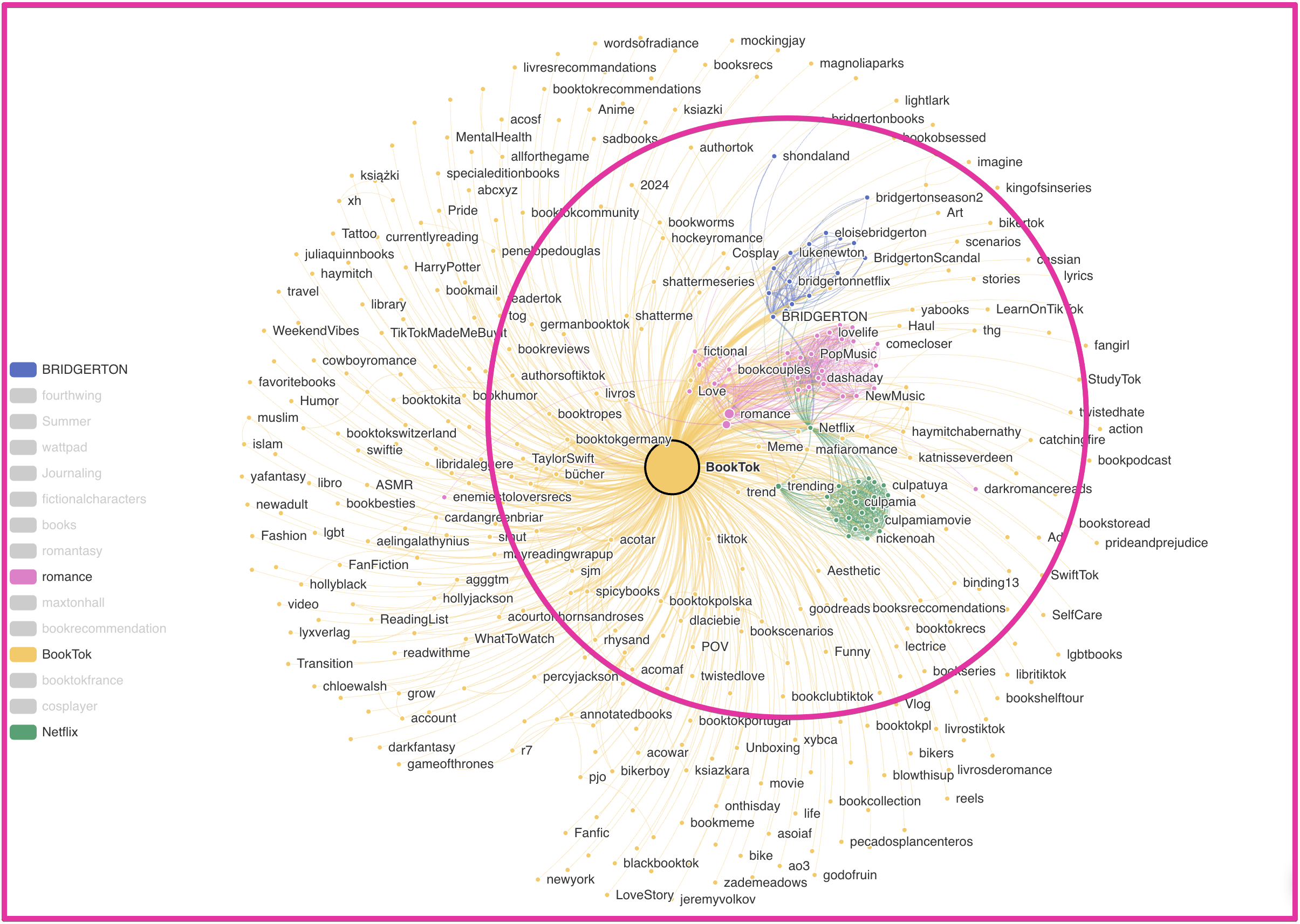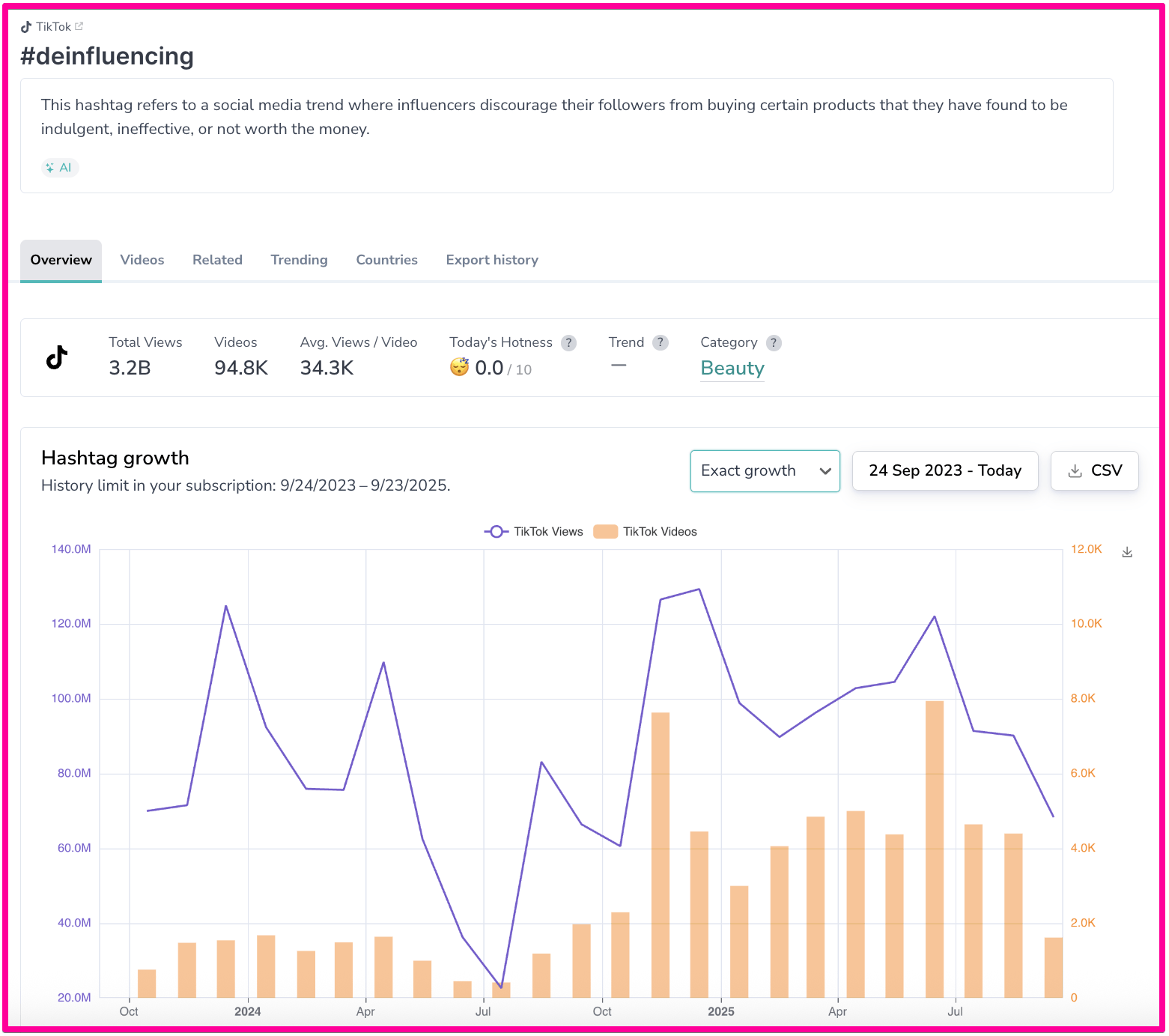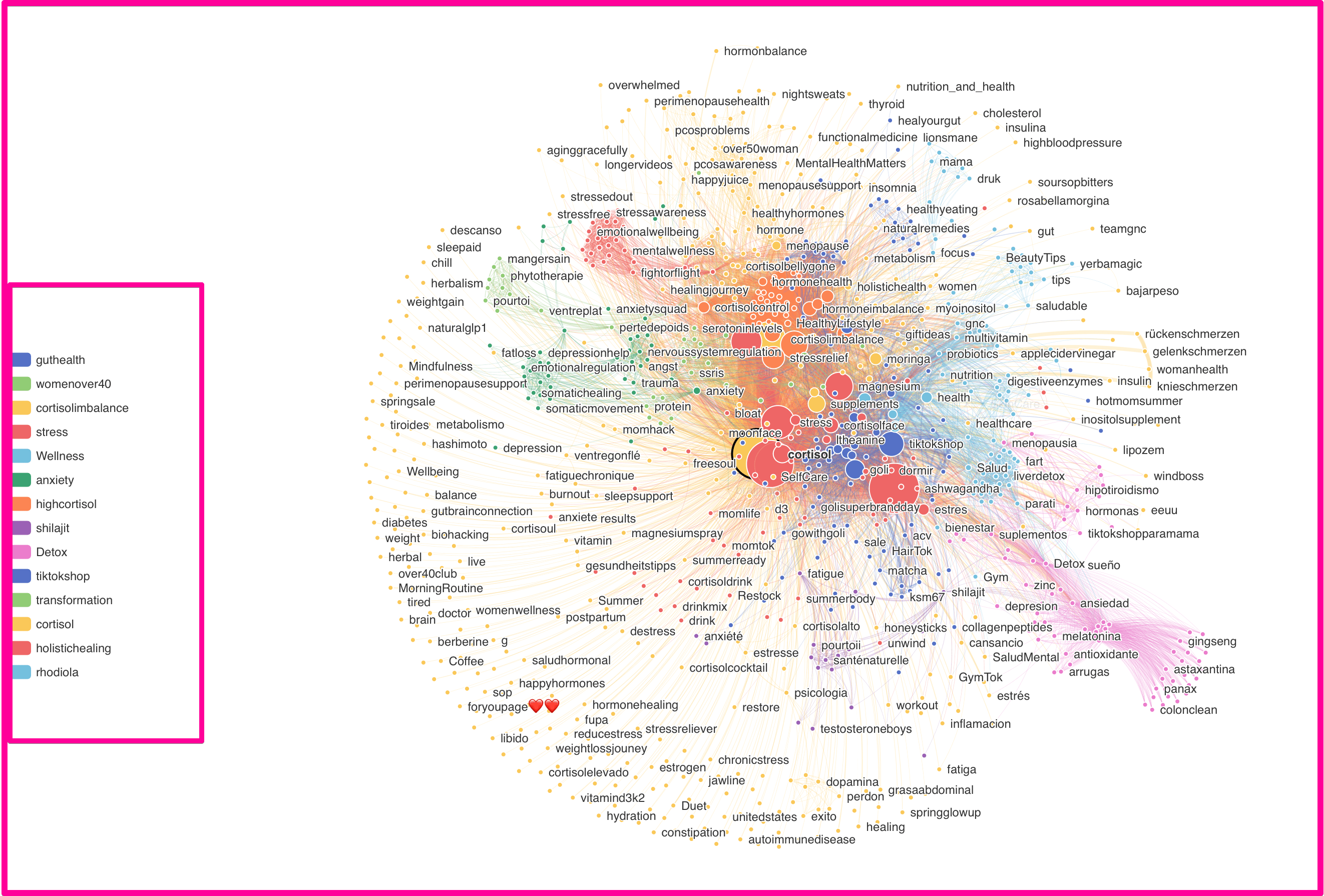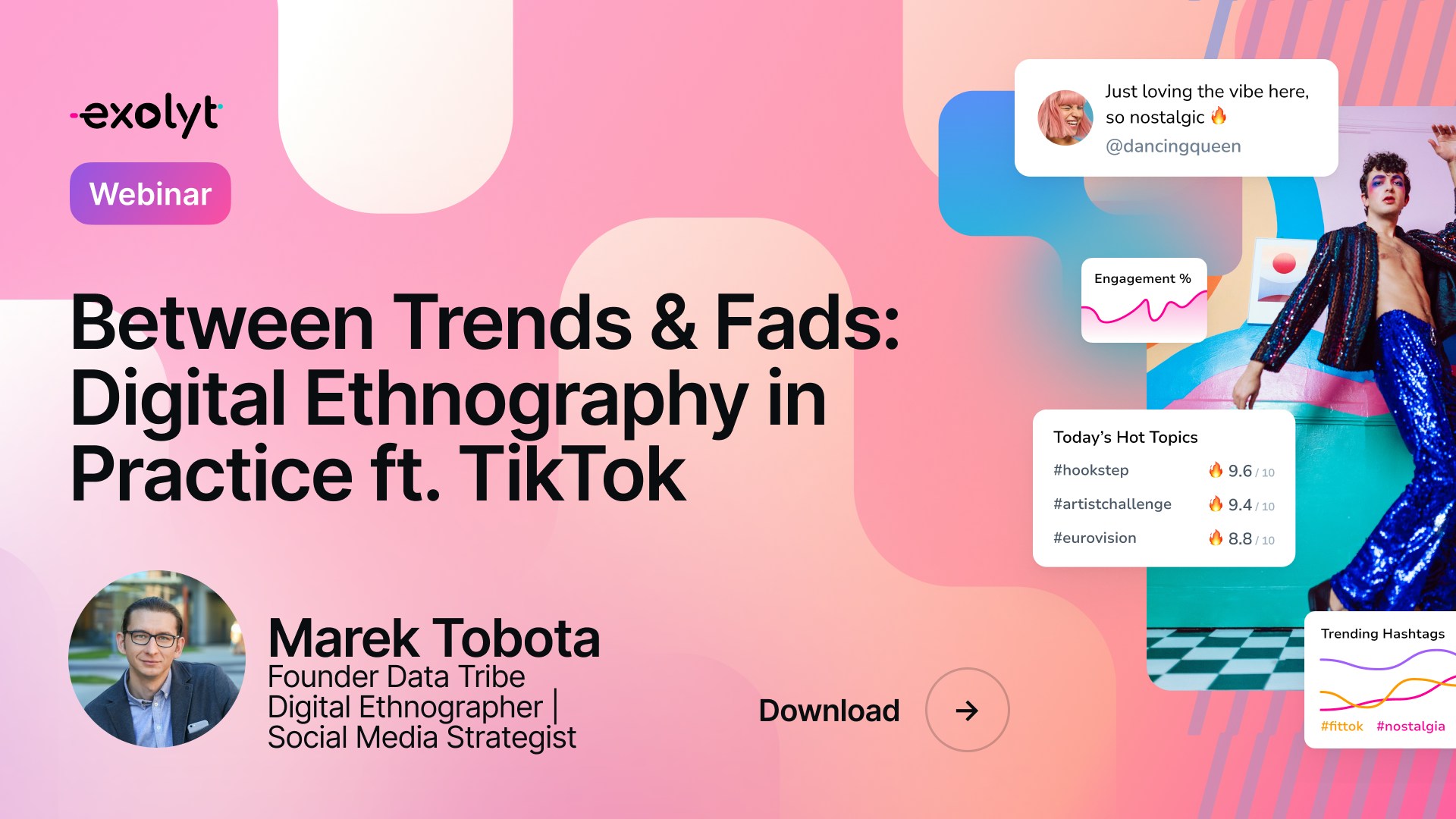Índice
- Tendências vs. Em Alta: Cultura Rápida vs. Cultura Lenta
- Por que o Contexto Importa: Além da Moda e do 'Trendwashing'
- Como identificar uma tendência real (e não se deixar levar pelo ruído viral)
- Do modismo no TikTok à tendência cultural: exemplos na prática
- Panorama geral: Identificação de tendências com base em insights culturais
No ritmo acelerado do TikTok, é fácil confundir um momento viral passageiro com uma tendência relevante. A maioria das marcas corre atrás do que está “em alta” nas redes sociais e, com isso, muitas vezes perde de vista o que as tendências de fato significam. Sim, aderir a desafios ou memes virais no TikTok pode gerar engajamento de curto prazo. Mas momentos em alta costumam ser efêmeros — a dança ou a hashtag viral de hoje pode ser esquecida na semana que vem. O verdadeiro desafio (e oportunidade) para profissionais de marketing e estrategistas de marca é aprender a distinguir uma moda passageira de uma tendência cultural emergente que sinaliza mudanças mais profundas nas atitudes dos consumidores.
Em alta vs. Tendência vs. Modismo: por que isso importa
- Em Alta = o que é visível na superfície — picos algorítmicos de atenção.
- Tendência = mudanças mais profundas e duradouras no comportamento ou nos valores.
- Moda Passageira = um modismo de curta duração e rápida ascensão, com pouca relevância a longo prazo.
Embora esses termos pareçam quase semelhantes, há uma linha tênue que separa o seu impacto no comportamento e na cultura, a velocidade com que ganham impulso e a rapidez com que desaparecem. Compreender essas distinções ajuda as marcas a evitar erros estratégicos — como lançar campanhas caras ligadas a modismos destinados a desaparecer.
Tendências vs. Em Alta: Cultura Rápida vs. Cultura Lenta
Para separar tendências de meros tópicos em alta, é útil compreender a diferença entre cultura rápida e cultura lenta. “Cultura rápida” refere-se às modas de curta duração e em rápida mudança impulsionadas pelas redes sociais e pela cultura pop, enquanto a “cultura lenta” engloba as correntes culturais mais duradouras e profundas que evoluem ao longo de períodos mais longos. Os vídeos virais, hashtags e excertos de áudio do TikTok são o epítome da cultura rápida – eles surgem rapidamente e muitas vezes desvanecem-se com a mesma rapidez. Mas, sob estes picos de popularidade, podem existir movimentos de cultura lenta que persistem e crescem ao longo do tempo.
Em Alta ≠ Tendência: Como Kim Townend, especialista em escuta social, afirma num artigo da Exolyt, “tendências isoladas ensinam-nos muito pouco, mas tópicos em alta vistos ao longo do tempo mostram-nos padrões e pontos em comum.”
Em outras palavras, uma única hashtag do TikTok a viralizar esta semana pode ser apenas um pico, mas se observar temas relacionados que recorrem ao longo dos meses ou em diferentes comunidades, pode estar a ver uma tendência real no sentido cultural. Observar apenas o que está em alta no TikTok não é suficiente – devemos conectar estes momentos virais ao panorama geral das forças de cultura lenta que moldam o comportamento do consumidor.
Por exemplo, a “Cultura Aconchegante” emergiu como uma tendência do TikTok, apresentando estéticas e conteúdos reconfortantes (pense em iluminação quente, configurações de jogos aconchegantes ou temas sazonais de abóbora com especiarias). À superfície, o conteúdo “aconchegante” torna-se viral em ondas sazonais (um fenómeno de cultura rápida). No entanto, o aconchego também explora um desejo duradouro do consumidor por conforto e nostalgia – uma mudança cultural mais lenta.
Leia mais sobre este fenómeno cultural no nosso blog: Como usar a escuta social para identificar tendências culturais?
Por que o Contexto Importa: Além da Moda e do 'Trendwashing'
Perseguir cada nova tendência no TikTok pode ser tentador, mas fazer isso às cegas é arriscado. Aderir a um meme ou a uma coreografia sem compreender o contexto pode levar ao que Marek Tabota, estrategista de redes sociais, chama de “trendwashing” – uma imitação superficial de uma tendência que o público percebe de imediato como inautêntica.
Todos querem aproveitar a onda de uma tendência no TikTok, mas apropriar-se de códigos culturais sem compreender seu significado mais profundo tende a gerar efeito contrário. Para as marcas, a lição é clara: não basta acompanhar tendências; é preciso entendê-las. Uma hashtag ou um áudio em alta pode sinalizar que há algo maior acontecendo no universo do seu público — uma mudança no senso de humor, nos valores ou nas necessidades — e ignorar esse contexto é perder o verdadeiro insight.

O Valor Real: Percepção Cultural em Vez de Detecção de Tendências
Segundo a fundadora do The SI Lab , Dra. Jillian Ney, tendências refletem o que é popular; o insight cultural revela por que isso ressoa — crenças, motivações, mudanças de identidade. Ela recomenda ir além das métricas: perguntar o que cada padrão realmente significa, quais vozes estão visíveis (ou ausentes) e como os algoritmos distorcem a visibilidade.
Não é um método prescritivo — é uma mentalidade. Isso requer abraçar a complexidade, conviver com a ambiguidade e valorizar o thick data (termo cunhado por Tricia Wang) — as narrativas ricas em contexto por trás das conversas nas redes sociais. Fonte.
Eugene Healey: O Contexto é Tudo
Eugene Healey nos lembra: revestir a marca com estéticas virais não é estratégia — pode parecer vazio. Em um artigo do Guardian, ele observa como o estilo cru e sem filtro da Geração Z (por exemplo, “bedrotten” posts) virou uma estética própria e polida — desprovida de autenticidade real. E, quando as marcas adotaram esse estilo de serem “cruas e sem filtro” nas redes sociais, não havia nada menos autêntico do que multinacionais com bilhões de dólares em capitalização de mercado fingindo ser adolescentes desencantados — e, ainda assim, aqui estamos. Para ele, compreender a autenticidade exige entender e monitorar a cultura.
Da mesma forma, em seu post colaborativo com a Exolyt, ele compartilhou sua perspectiva sobre os desafios — e as oportunidades — de navegar pelos ciclos de conteúdo ultrarrápidos do TikTok. O algoritmo do TikTok transformou a forma como experimentamos as tendências — embora tudo pareça uma tendência, nem tudo merece investimento. Portanto, não se devem tratar as tendências como atalhos para o engajamento; se desalinhadas com a identidade da marca, as tendências parecem preguiçosas, e não inteligentes.
Aqui estão alguns destaques importantes do seu vídeo:
- 𝗦𝗮𝗶𝗯𝗮 𝗢 𝗤𝘂𝗲 𝗘𝘀𝘁á 𝗥𝗮𝘀𝘁𝗿𝗲𝗮𝗻𝗱𝗼
Nem toda hashtag em alta ou vídeo viral sinaliza uma verdadeira mudança cultural! Compreender a diferença entre um momento passageiro e uma conversa que pode potencialmente moldar o comportamento do consumidor é crucial.
- Use ferramentas para filtrar o ruído
Eugene destaca a importância das ferramentas de social listening. Por exemplo, a Exolyt monitora e mapeia conversas relacionadas, ajudando a distinguir tendências relevantes de memes passageiros.
- Mapeie o ecossistema de tendências
Como mencionado, entender como uma tendência se conecta a categorias mais amplas ajuda as marcas a alinhar comunicação e recursos de forma eficaz, pois é importante saber se a conversa vai se sustentar ao longo do tempo antes de comprometer recursos nela.
- Passe do reativo ao estratégico
Ao identificar as camadas mais profundas das redes de conversas, as marcas podem tomar decisões orientadas por dados sobre onde participar, com quem colaborar e como estruturar estratégias de conteúdo de longo prazo.
Como identificar uma tendência real (e não se deixar levar pelo ruído viral)
Distinguir uma tendência duradoura de um sucesso pontual exige uma abordagem mais estratégica e orientada por pesquisa. Social listening e análise cultural são ferramentas essenciais neste processo. A seguir, alguns passos práticos e critérios para diferenciar uma tendência real do que está apenas em alta no TikTok:
- Identifique conexões entre comunidades:
Um teste rápido é avaliar quão amplo e diverso é o engajamento. Se uma hashtag ou um tema surge em múltiplas comunidades ou subculturas no TikTok, isso indica maior relevância. Quanto mais grupos distintos adotam uma hashtag ou um meme ao longo do tempo, maior a probabilidade de representar uma tendência cultural, e não uma moda passageira de nicho.
Por exemplo, se uma hashtag de moda é usada não apenas por fashionistas, mas também em conteúdos de música, games e gastronomia, ela está se conectando a algo que permeia a cultura. Já um tópico em alta confinado a um pequeno nicho do TikTok pode desaparecer na semana seguinte.
Dica: Monitore uma hashtag por alguns meses — modismos passageiros costumam se esgotar rapidamente, enquanto uma tendência consistente tende a reaparecer em contextos variados. Você também pode usar o Exolyt Hashtag Relations Graph para entender se os subtópicos que impulsionam a tendência principal aparecem em outras conversas relacionadas e quão prevalente é a tendência.

Fonte: Relações entre hashtags da Exolyt, ex.: #BookTok
- Identifique padrões e temas comuns:
Não conte apenas visualizações; procure por temas ou estéticas recorrentes. Você está percebendo tons, mensagens ou elementos visuais semelhantes entre diferentes vídeos em tendência? Certas gírias, trechos de músicas ou estilos estão aparecendo repetidamente? Padrões podem indicar um movimento mais amplo. Como observa um analista, estar muito “online” e atento a essas nuances facilita conectar os pontos e entender as mudanças culturais mais amplas por trás desses padrões.
Por exemplo, a prevalência de tutoriais e truques de moda DIY e upcycling no TikTok pode apontar para uma tendência mais ampla de sustentabilidade e anti-consumismo entre os jovens — mesmo que cada microtendência de vídeo (reformas de peças de brechó, tours de armário etc.) pareça isolada, elas compartilham um valor comum. Portanto, busque pontos em comum sobre por que as pessoas se engajam com determinados conteúdos: trata-se de expressão de identidade, nostalgia, rebeldia ou pertencimento à comunidade? Esses padrões comuns indicam a tendência subjacente.
- Avalie a longevidade e a presença multiplataforma:
Um dos sinais de uma tendência genuína é que ela se mantém e vai além de uma única plataforma. Se algo está em alta no TikTok e há sinais disso no Instagram, Twitter (X), YouTube ou nas buscas no Google, essa tendência tem fôlego além de uma moda passageira do TikTok. Por outro lado, se um fenômeno é apenas relevante no TikTok e surge de repente, pode ser fogo de palha.
Investigue há quanto tempo o tema vem ganhando tração: esse tema ou hashtag já existe há mais de algumas semanas? Os picos de interesse se repetem sazonalmente ou crescem ao longo do tempo? Uma tendência que vem crescendo de forma consistente há um ano (mesmo com altos e baixos) e ainda apresenta trajetória ascendente é uma forte candidata a uma tendência cultural genuína. Além disso, verifique se as pessoas estão procurando por esse tema no Google ou discutindo no Reddit — sinais como crescimento do volume de buscas ou conversas em múltiplas plataformas geralmente indicam que a tendência reflete um interesse mais amplo, não apenas um efeito passageiro do algoritmo do TikTok.

Conte sempre com a Exolyt para monitorar a taxa de crescimento histórica e atual de qualquer tópico no TikTok. A análise precisa do crescimento de hashtags da Exolyt quantifica com precisão o quanto uma hashtag cresceu em visualizações, publicações e engajamento, dia a dia, ao longo do tempo.
- Analise o porquê (Contextualize a tendência):
Uma vez identificada uma tendência em potencial, aprofunde a análise para entender seu contexto e os fatores que a impulsionam. É aqui que o social listening e a análise se tornam essenciais. Colete dados sobre como a tendência é discutida: que linguagem o público usa? Quais sentimentos ou motivações são expressos?
Em vez de depender apenas de IA e dashboards para contar a história, dedique tempo a revisar o conteúdo qualitativamente — leia comentários, registre relatos de usuários e observe como a tendência evolui. Muitas vezes, os insights mais valiosos surgem ao ver como os próprios usuários interpretam a tendência. Agrupe conteúdos e conversas em temas para ver o quadro geral (por exemplo, a maioria participa de uma tendência no TikTok por humor, por solidariedade ou como expressão de criatividade?).
Ao mergulhar nas conversas, você pode interpretar não apenas o que as pessoas estão fazendo, mas por que elas fazem desse jeito. Esse contexto revela se a tendência se conecta a uma narrativa cultural relevante ou se é apenas um meme passageiro.
- Identifique a necessidade ou o comportamento humano subjacente:
Toda tendência duradoura é impulsionada por algum desejo, medo ou valor humano subjacente. Pergunte: Qual necessidade esta tendência atende? Pode ser a necessidade de comunidade (por exemplo, uma hashtag que reúne uma subcultura), de autoexpressão, de escapismo, de autenticidade, etc. Identificar esse driver é crucial.
Se você identifica que uma microtendência no TikTok é impulsionada, por exemplo, pelo desejo de positividade corporal, liberdade financeira ou consciência ambiental, então não está olhando apenas para uma tendência – está vendo parte de um movimento cultural mais amplo.
Como recomendam os pesquisadores de tendências, entender o comportamento ou a necessidade não atendida que impulsiona uma tendência ajuda a ver como ela se encaixa em mudanças culturais mais amplas. Por exemplo, a tendência viral “#GirlDinner” (em que os usuários mostram jantares minimalistas no formato de prato de petiscos) pode parecer apenas um conceito divertido e compartilhável, mas por trás dela pode haver um comentário sobre vida independente ou uma rejeição às normas formais de refeição – temas que se conectam a conversas culturais mais amplas sobre estilo de vida e autocuidado. Sempre conecte a tendência a histórias humanas fundamentais.
Você também pode conferir este webinar apresentado por Marek Tobota para entender como diferenciar um pico viral pontual de uma tendência cultural emergente que sinaliza mudanças mais profundas nas atitudes do consumidor.
Ao longo desse processo, ferramentas de social listening e plataformas de analytics podem ser fundamentais. Acompanhar manualmente o fluxo massivo de conteúdo do TikTok é desafiador, mas plataformas como a Exolyt foram desenvolvidas para ajudar a identificar e monitorar essas tendências.
Por exemplo, o dashboard da Exolyt mostra, em tempo real, quais hashtags e áudios do TikTok estão em alta e ainda destaca hashtags relacionadas e as comunidades que interagem com eles. Isso facilita validar se a sua hipótese de tendência está de fato ganhando tração ampla ou se permanece restrita a uma bolha.
Vale lembrar que as ferramentas fornecem os dados — cabe a você adicionar a camada de análise cultural. Como alerta um especialista, não dependa apenas da IA para analisar os dados por você, sem o seu direcionamento; assim, você pode perder os melhores insights. Em vez disso, use as ferramentas para coletar informações e aplique a curiosidade e a expertise humanas para interpretar o significado.
Do modismo no TikTok à tendência cultural: exemplos na prática
Às vezes, a diferença entre um modismo e uma tendência só fica evidente em retrospecto. Considere os seguintes casos:
- “Cortisol Matcha”: À primeira vista, só mais um truque de bem-estar viral. No contexto, sinalizou uma tendência de consumo mais profunda: crescente conscientização sobre gestão do estresse e saúde hormonal. A receita da moda fazia parte de uma discussão mais ampla sobre saúde.

Exolyt - Conversas sobre cortisol no TikTok
- Estratégia orientada por propósito da Patagonia: O ativismo ambiental não é um modismo. As ações da Patagonia — de campanhas de desestímulo ao consumo a um ativismo consistente — mostram a força de alinhar-se a valores culturais duradouros, e não a estéticas passageiras.
- Ressurgimento digital da Marimekko: No TikTok, as estampas da Marimekko ganharam tração, e a marca soube capitalizar ao conectar esse pico de interesse a associações culturais mais profundas: legado finlandês, sustentabilidade e expressão alegre.
@marimekko Our Scandi friend @Pernille Rosenkilde on a dreamy summer stroll 🧡 #marimekko #unikko #ootd #ootdinspo #copenhagen #springoutfit #scarvesstyling
♬ CARNAVAL - Cavendish
Esses exemplos evidenciam que o que está em alta no TikTok pode, de fato, abrir caminho para insights culturais relevantes – mas apenas se olharmos além do superficial. Uma tendência ganha força quando se conecta a forças culturais (como conforto, autenticidade, orgulho da própria identidade etc.), e as marcas que entendem essas forças conseguem responder de maneira que pareça autêntica para o público.
Panorama geral: Identificação de tendências com base em insights culturais
Em última análise, diferenciar uma tendência real de uma moda passageira passa por manter a visão do todo em foco. Profissionais de marketing e estrategistas devem lembrar que o TikTok é um espelho da sociedade tanto quanto é uma fonte de entretenimento. Vivemos em um mundo extremamente acelerado, e é fácil se deixar levar pela cultura do imediatismo. Mas identificar as tendências com longevidade e que valem seu tempo e investimento é mais importante do que nunca. Na prática, isso significa usar o TikTok não apenas para conteúdos em alta, mas como uma janela para a cultura em evolução do seu público.
Ao combinar o social listening em tempo real com uma análise cultural mais profunda, é possível prever quais momentos virais sinalizam mudanças mais amplas. Isso pode orientar desde a estratégia de conteúdo até o desenvolvimento de produto.
Por exemplo, identificar uma tendência real logo no início ajuda a preparar a sua estratégia de marketing para o futuro ou a inspirar uma nova linha de produtos — além de mitigar o risco de embarcar em uma onda que não gera resultados. Por outro lado, entender onde o seu tópico-chave se encaixa no panorama cultural — por que as pessoas de fato falam sobre ele, como o comportamento delas está mudando e o que esperam das marcas — permite à sua marca ficar um passo à frente dos concorrentes ao gerar conexão com o público.
Em conclusão, “o que está em alta” é apenas o ponto de partida.
O verdadeiro valor está em conectar esses picos de atenção a narrativas culturais duradouras. As tendências não acontecem isoladamente; são fios de uma tapeçaria maior de mudança social. Como estrategista de marca ou profissional de marketing, seu papel é enxergar a tapeçaria inteira, não apenas o fio que mais chama atenção. Então, da próxima vez que uma febre no TikTok chamar sua atenção, aproveite — mas também pergunte: o que está realmente por trás disso?
Ao fazer as perguntas certas e aproveitar a inteligência social, você separa o sinal do ruído e transforma o hype viral em estratégia acionável. Em um mundo de dashboards e sobrecarga de dados, esse tipo de insight qualitativo, baseado em contexto cultural, não é apenas útil — é transformador para quem quer criar campanhas com impacto real.
Explore o Exolyt para suas análises no TikTok
Comece com um teste gratuito de 7 dias ou entre em contato com nossa equipe para conhecer melhor as funcionalidades da plataforma e potenciais casos de uso.




